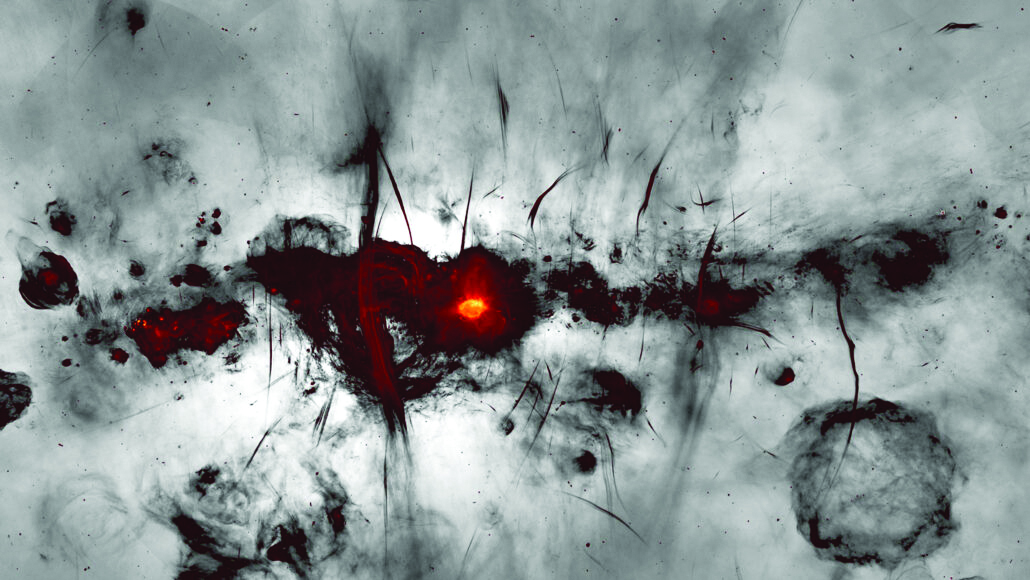Readers ask about a hare’s epic trek, the James Webb telescope’s solar storm preparedness and more
- More than 2 years ago

Going the distance
An Arctic hare dubbed BBYY trekked at least 388 kilometers across the tundra in 49 days, shattering expectations for a creature that typically stays close to home, Ariana Remmel reported in “An Arctic hare’s journey across northern Canada breaks records” (SN: 2/26/22, p. 15).
Reader Sharon Davies wanted to know why the Arctic hare traveled such a great distance.
Adult female hares from BBYY’s population “might spend the summer in areas with few predators, but also little food, to protect their babies,” says Dominique Berteaux, a mammalian ecologist at the Université du Québec à Rimouski in Canada. He and colleagues hypothesize that the record-breaking hare made the epic trip to spend the winter in a region where food was more abundant, but also where predators were plentiful.
In September, the team plans to put satellite collars on young hares to track them through winter and learn more about their travel habits. “We have a feeling that they don’t follow their mother, but rather gather in large groups that travel together,” Berteaux says.
Solar risks
The most powerful telescope ever launched has reached its final destination in space, but it still has a long to-do list before it can start doing science, Lisa Grossman reported in “James Webb telescope gets in position” (SN: 2/26/22, p. 10).
Reader Elizabeth McDowell wondered if the telescope is protected against solar storms.
During a solar storm, the sun spews radiation and charged particles, which could potentially damage the James Webb Space Telescope’s electronics. While the telescope won’t be able to maneuver away from such emissions, it has enough metal shielding to protect those components, says Paul Geithner, the deputy project manager for the telescope’s technical side at NASA’s Goddard Space Flight Center in Greenbelt, Md.
Solar storms could cause static charges to build up on the surfaces of the telescope, Geithner says, leading to sudden discharges that can harm the electronics. To protect against this concern, all of the telescope’s surfaces, including the five-layer sunshield, are grounded, he says.
Cosmic gallery
The MeerKAT radio telescope array in South Africa provided a stunning new look at the Milky Way’s chaotic center, as seen in radio wavelengths (shown below), Lisa Grossman reported in “The Milky Way’s heart shines in radio waves” (SN: 2/26/22, p. 32). Reader Andy Drews marveled at the image on Facebook: “Hard to believe that it’s not a piece of artwork.”

Tagging along
A recently found space rock shares Earth’s orbit around the sun. This “Trojan asteroid” is only the second one discovered to belong to Earth and hangs out at the fourth Earth-sun Lagrange point, or L4, Liz Kruesi reported in “Earth ‘Trojan asteroid’ has company” (SN: 2/26/22, p. 15).
Reader Peter Gaudio pointed out that the James Webb Space Telescope is located at another Lagrange point, called L2. A Lagrange point is a region in space where the gravitational pull of two massive celestial bodies and the centrifugal force of a smaller object balance one another to create a stable location. The telescope requires propulsion periodically to stay in place. Gaudio asked why the Trojan asteroid needs no such position maintenance.
While Lagrange points are relatively stable regions in space, some are less stable than others. “L1, L2 and L3 are not precisely stable, so a spacecraft or asteroid would need only a small push to be knocked out of the area. That is why the telescope needs thrusters to stay in position at L2,” Kruesi says. “The L4 and L5 points, though, are truly stable. They are huge regions where space rocks and dust can just chill.”
I hate to burst your bubble
Researchers created a bubble made with water, plastic microparticles and glycerol that lasted for 465 days before popping, Emily Conover reported in “ ‘Everlasting’ bubbles can linger for a long time” (SN: 2/26/22, p. 4).
On Twitter, reader @niloulsarvian asked what the potential uses are for such a long-lasting bubble.
“Bubbles are the building block of foams,” says physicist Michael Baudoin of the University of Lille in France. “This new material could be used for the development of ultrastable foams.”